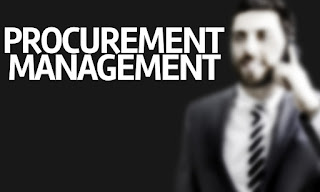Does Agile Procurement Exist
Agile Procurement means many different things to many people and following the old adage “You can please some of the people some of the time….” Almost certainly means that there will be difference of opinions. Perhaps some definitions of agile /Agile would be a good place to start; oh dear, there’s already disagreement over the capitalisation of the first letter.
The Oxford Dictionaries defines agile as “Able to move quickly and easily” and “Relating to or denoting a method of project management, used especially for software development, that is characterized by the division of tasks into short phases of work and frequent reassessment and adaptation of plans.”
Agile as a business term follows on from the concept of lean engineering and can trace a lineage back to lean manufacturing and the Toyota Production System in the late 1940s. Based on a system underpinned by process, tools and training it allows organisations to respond quickly to customer needs and market changes while still controlling costs and quality.
Taking the modern approach I Googled what is the definition of agile methodologies? and it gave a multitude of different responses. A number of the responses called out the relationship with software development, the associated complexity and the need for flexibility. Perhaps the authoritative document, the Manifesto for Agile Software Development could be a good starting point.
The three definitions and related source documents are useful to gain a broader understanding of agile ways. A key element that recurs whether it’s source information for the second or third definition is the need for collaborative working. Without collaborative working there can be no agility. Collaborative working, with both internal and external suppliers and active vendor management (we can talk about the benefits of Supplier Relationship management another time), provides the backbone for successful outcomes. Good behaviours and working towards positive outcomes are the only ways Agile working can stand a chance of success.
To raise the blood pressure of all procurement professionals let’s take the statement from above, “it allows organisations to respond quickly to customer needs and market changes”, Many organisations will just see that this is an opportunity to change the scope. What it really means is that the scope has been suitably developed to enable changes without being prescriptive. All procurement systems should allow for flexibility, even legally regulated regimes. If there is uncertainty why use a contract when a framework would enable suitable commercial friction and equality of evaluation without becoming prescriptive and restrictive?
So we’ve got the principles out of the way. Just to clarify, are we talking about undertaking procurement in an agile way? Or are we talking about procuring agile services? Addressing the first, let’s not get hung up on language about waterfall or agile sprints; all projects, regardless of what they are, have activities that follow other activities. It’s time to understand tasks (or user stories), complexity, resource and duration; the procurement professional is always asked, “How long will that take?” I always give two answers; the first a quantifiable duration, predicated upon timely engagement and responses from the business and the second, a lot less helpful, is “Depends, on how you support it”. So, with the right procurement knowledge, business engagement and support the procurement elements can be conducted akin to agile sprints; but for the agile purist they may well always be viewed as waterfall.
When undertaking the procurement of agile services it’s essential to look at both pre and post contract. Delivering the signed agreement will take significant effort to sufficiently detail the initial sprints (and total number of sprints) correctly. Perhaps the greatest challenge to both the business and procurement professionals is recognising the time & materials approach to contracting in Agile. We shouldn’t forget that a time & materials approach where the scope/ outputs are known and the sprints have been planned should see the elimination of the risk premium often priced into Fixed Cost contracts. Living with an agile delivery post contract award is nigh on impossible if the contracting party is not set up to work in agile way culturally, mentally or geographically. Transferring an agile contract over to the business cannot merely take a brief handover and walk away approach it will need embedding in the Business as Usual function and the time to embed the processes to ensure future success.
Ideally, the above gives an insight into some thinking behind an agile approach to Procurement and the possibility to optimise procurement; providing an opportunity for the elimination of waste in the process. The ability to procure agile services is certainly possible and the above provides some pointers for those considering an agile approach to consider.


Comments
Post a Comment